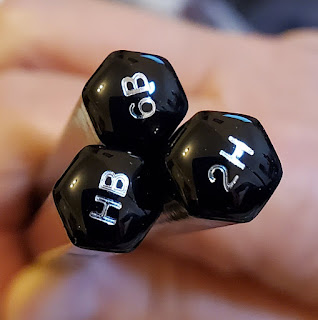 |
| Holbein colored pencils |
Without question, my favorite graphite drawing pencils are all
from Japanese manufacturers – Mitsubishi, Tombow and the
lesser-known Kitaboshi. And yet my top-ranking contemporary colored
pencils are all made by European companies. I’ve often wondered why none of
the major Japanese pencil makers have come out with a colored pencil line that
is competitive with Caran d’Ache’s or Faber-Castell’s artist-quality lines.
Although Tombow’s Irojiten is a worthwhile set that’s also visually stunning,
I would never reach for it before any of my favorites (and I question whether Irojiten
would be considered artist quality). Perhaps Mitsubishi’s Uni Pericia
line is intended to be an artist-quality premium brand, but the color range is
small for that . . .
Musing about all of this one day (as a pencil geek is wont
to do), I suddenly realized that I had forgotten all about Holbein. I’ve had a
set of Holbein Artists’ Colored Pencils for several years, but somehow I never got
around to reviewing it or even using it much – both of which I regret, because
they are very nice pencils. What’s more, they could be the one Japanese line
that is a worthy competitor to my favorite Swiss and German colored pencil
makers.
I didn’t know anything about the Holbein name in terms of
art materials, so I looked it up. According to Holbein’s website, “With
head offices in Osaka Japan, the company was formed just before the turn of the
last century, and took the name of the much revered European artist Hans
Holbein in the 1930’s. From that time, Holbein’s presence has been significant,
not only in Southeast Asia, but also in North America, Australia and Europe.”
It’s apparent from the catalog that Holbein’s main art
supply focus is on paints, not pencils. If I think about it, this makes sense –
expertise in pigments can be applied to any medium, whether liquid or solid,
paint or pencils. Perhaps this explains why a company like Mitsubishi or Tombow
that makes excellent graphite pencils (and stationery in general, but not art
materials) isn’t necessarily going to produce stellar colored pencils.
Holbein pencils have what I think of as the classic colored
pencil look: A glossy, round barrel matching the pigment hue. Reminiscent in
design of Faber-Castell Polychromos, the pencil ends with a gold band
and elegant rounded end cap. Also similar to Polychromos is its 3.8mm oil-based
core.
 |
| A classic look reminiscent of Polychromos. |
The lightfast rating is indicated on each pencil – a sign
that this is a serious artist-quality pencil.
 |
| Lightfast rating on each pencil |
With an extremely soft, creamy consistency similar to Prismacolor,
the Holbeins produce no dust. They also layer and blend beautifully. These
pencils are a joy to use!
 |
| 2/7/21 Holbein colored pencils in Stillman & Birn Zeta sketchbook |
What I don’t get is their exorbitant price. When I got my
set of 50 a few years ago, I paid less than $100 on eBay, which isn’t cheap by
any definition, but it’s in line with European artist-quality sets (somewhere
between Polychromos and very-high-end Caran d’Ache Luminance). Now the least
expensive and easiest place to get them in the U.S. is Blick, where the same set of 50 is $158 – even higher than Luminance. What caused that price leap? Is
it just the Japanese premium markup (seen in some stationery items)?
The good news is that Blick also carries Holbein open stock,
so it’s possible to buy a few colors to try. The hard part will be when you
decide you love them and need to get more colors – you’ll have 150 to choose
from, in fact (right up there with Prismacolor)! It is, however, a good way to gradually
build a color range you’ll use rather than be stuck with an odd palette. For
example, my set of 50 (the smallest available on eBay at the time) includes
several shades of bright pink, some neon colors and metallics, none of which I
use much.
Beautiful application, lightfast ratings, open-stock
availability: They all point to an excellent artist-quality colored pencil that
I would recommend – if it weren’t for that price.


















































